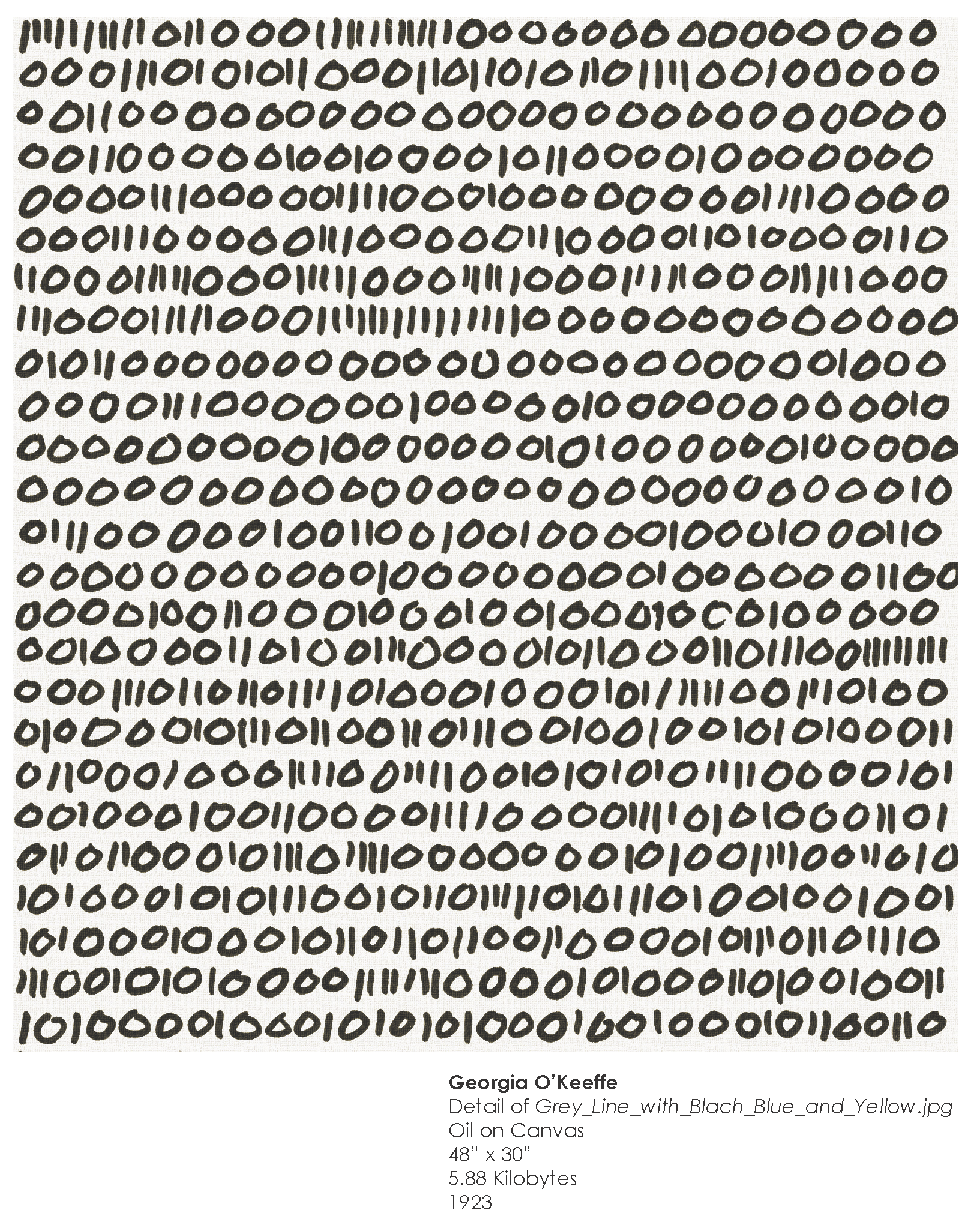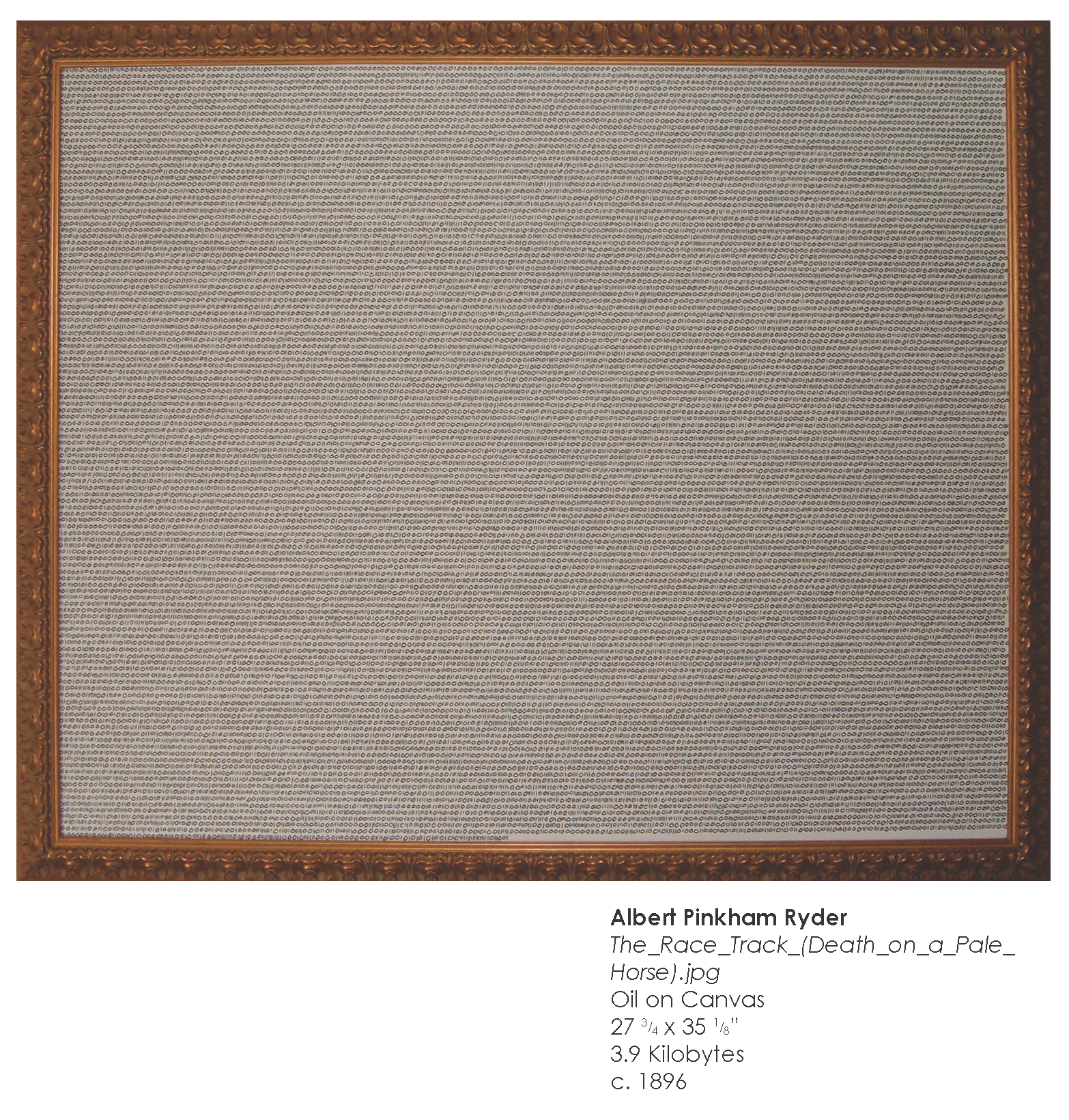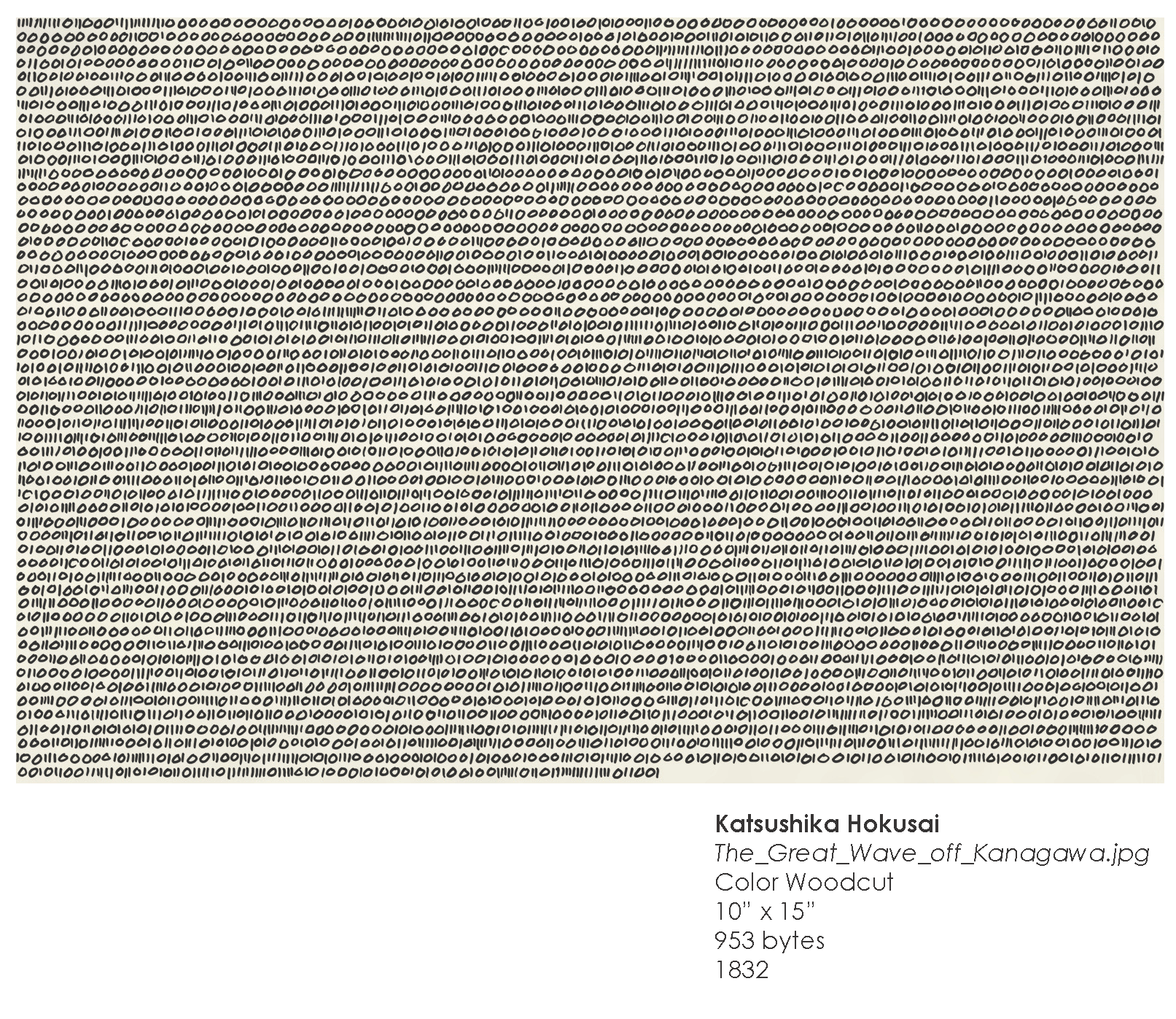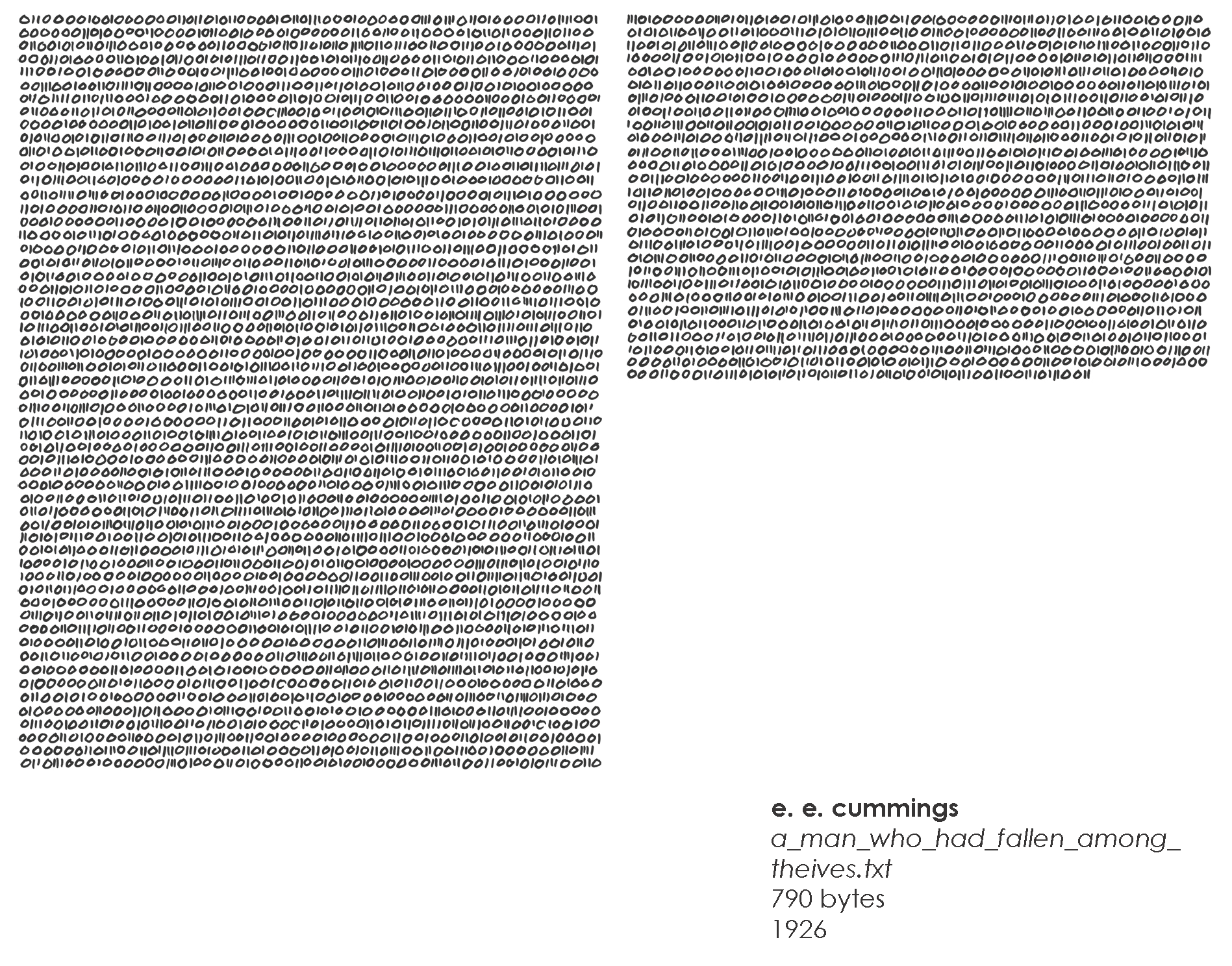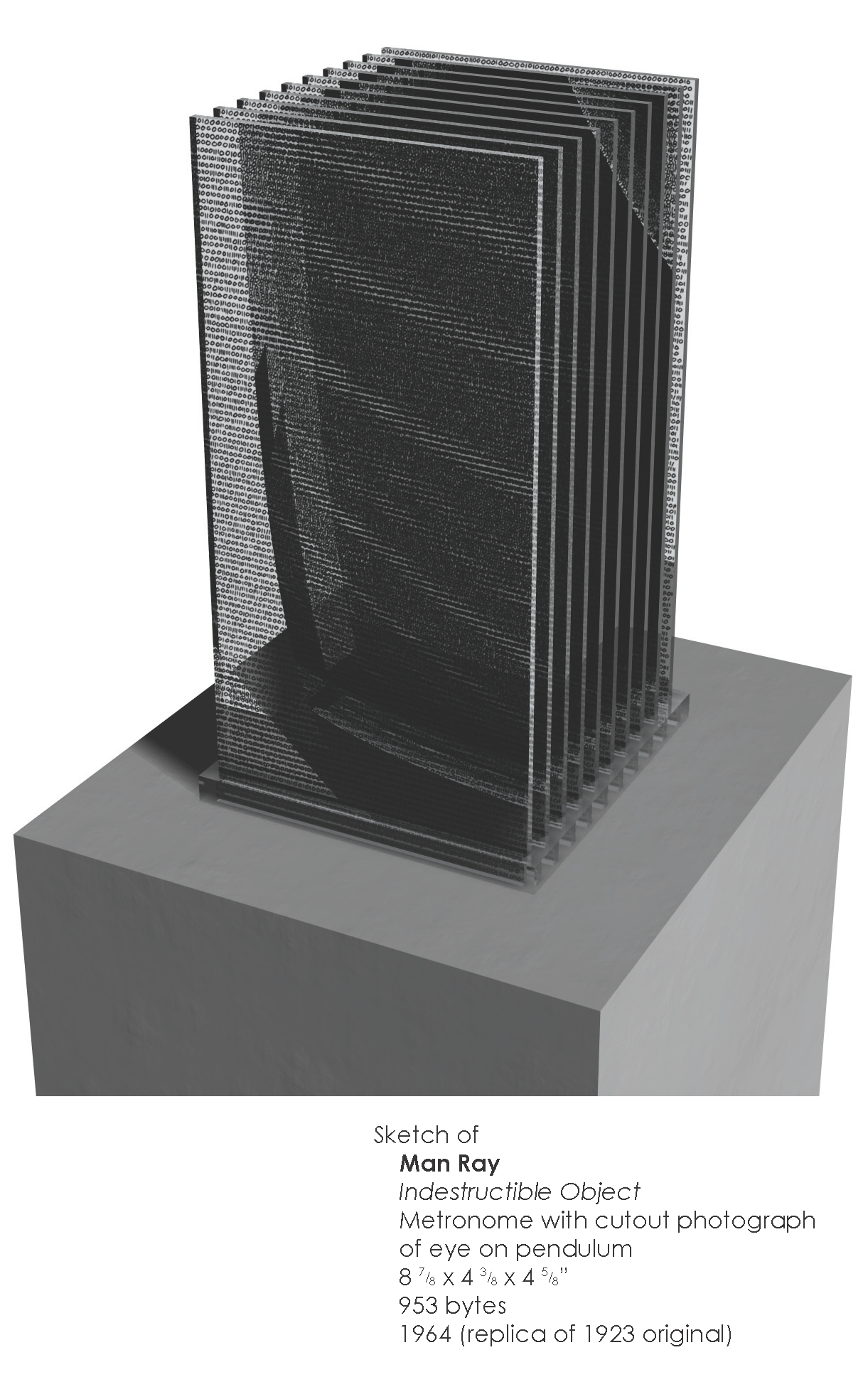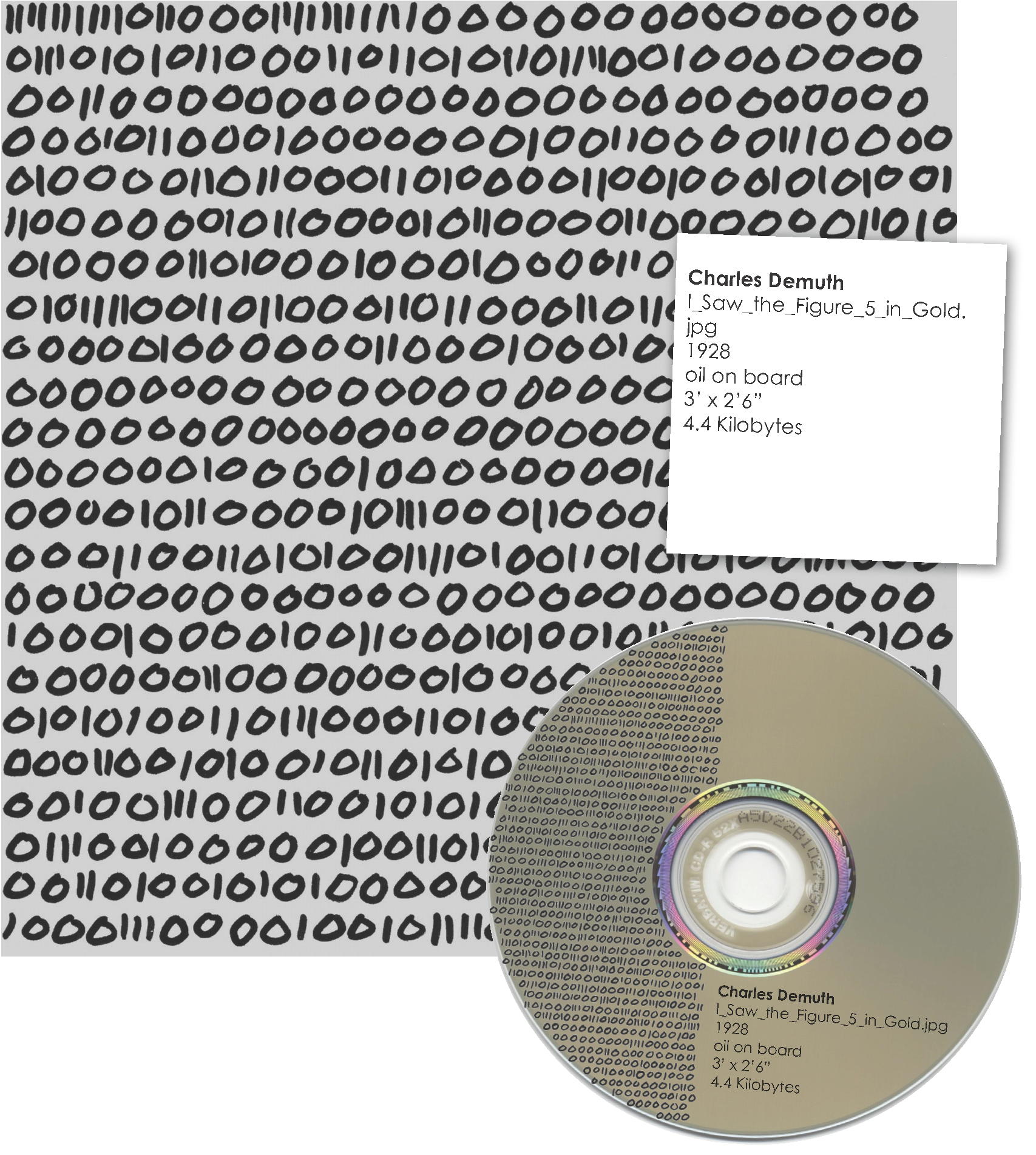![]() Binary Art is an exploration of the universal language binary, which emerged at the end of the 20th century. Binary is used to describe everything a human can experience. The ultimate goal is to digitally recreate a perfect simulation of the physical world. A computer serves as a translator of the binary language. It interprets the language and translates it into a form we can understand. Binary Art exposes the audience to the binary language directly, forgoing the use of a translator.
Binary Art is an exploration of the universal language binary, which emerged at the end of the 20th century. Binary is used to describe everything a human can experience. The ultimate goal is to digitally recreate a perfect simulation of the physical world. A computer serves as a translator of the binary language. It interprets the language and translates it into a form we can understand. Binary Art exposes the audience to the binary language directly, forgoing the use of a translator.
Binary Art is created by custom software I wrote. The software takes a digital file and reads through it bit by bit. It then creates an image file in which each bit of the original file is replaced with either a one or a zero in my handwriting. The resulting image is then printed out.
I am currently producing four types of Binary Art: poetry, painting, drawing and photographs. With Binary Poetry, the source file is a text file. The output is on paper. Because of the amount of data involved, poems often require more than one sheet of paper. With images, the source file is a JPEG. The medium on which it is printed and the size of the image depends on the original work. Because of the limitation created by size, the source JPEG is usually quite small. In the future, I hope to also create Binary Sculpture and Binary Installations. Each will create a spatial binary representation of physical objects or spaces.
Binary Art grew out my of discomfort with simulation technologies. The myth of cyberspace is that it will allow people to immerse themselves in artificial environments, which rival the physical world. Although it is possible that technology will achieve this feat, I question its validity. Binary Art is the form of my questioning. Through it, I make the claim, that experiencing my Binary Art is equivalent to experiencing the original. This is the same claim made by designers of virtual reality technologies. Although the images have a strong aesthetic of their own, they do not allow us to experience the original work.


